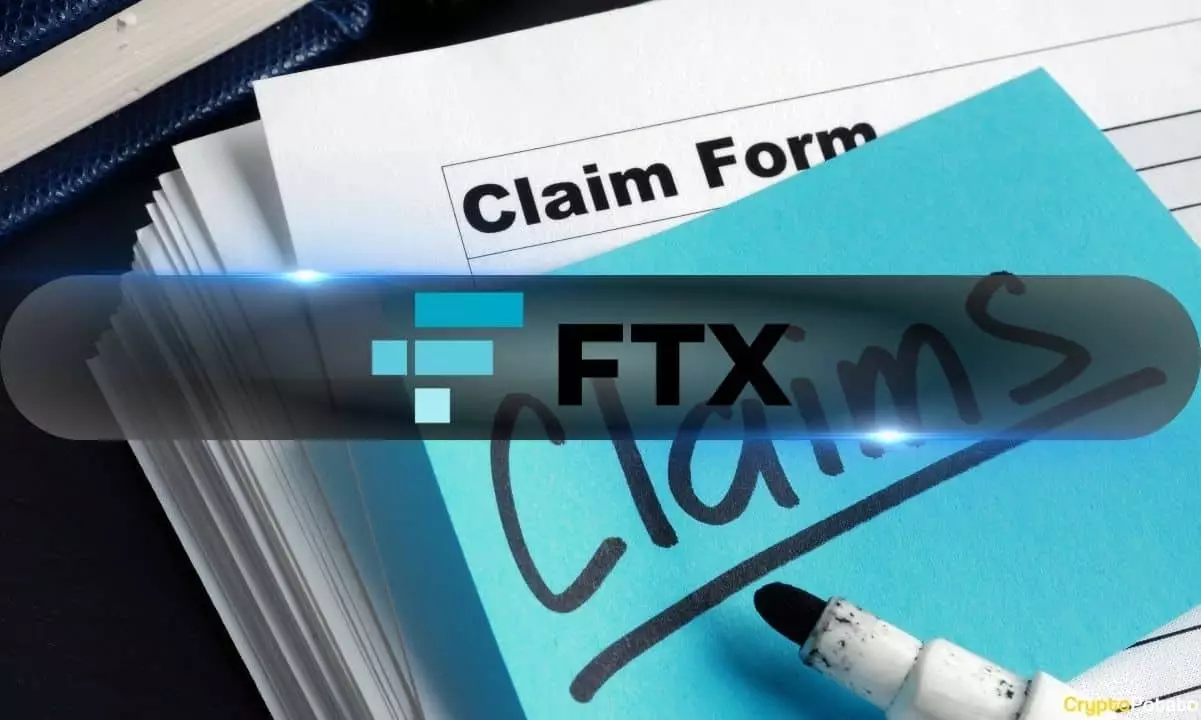The latest news surrounding the FTX Recovery Trust’s announcement to disburse over $5 billion to creditors certainly seems like a positive turn for many investors who lost their fortunes in the catastrophic collapse of the crypto exchange. However, let’s pause for a moment to reflect on the complexities and potential pitfalls surrounding these distributions, which hype their way into headlines but may mask deeper issues within the recovery process. While the refunding of small creditors has garnered praise, the reality is that the entire mechanism feels more like a band-aid over a gaping wound—an act that may ultimately lead to further disillusionment among stakeholders.
FTX’s bankruptcy and subsequent recovery efforts are emblematic of the larger issues in the crypto landscape. The increasing classification of creditors into various “convenience classes” reeks of inefficiency and a prioritization that could breed resentment. Why do we need such classifications when the fundamental goal should be to treat every creditor fairly and equitably? In a market that thrives on the principles of transparency and trust, the convoluted payout structure raises eyebrows and generates skepticism regarding fairness—a cornerstone of any thriving financial ecosystem.
The Recovery Trust: A Beacon of Hope or a Business as Usual?
John J. Ray III’s proclamation that this represents a significant step for FTX is rooted in optimism, but it’s crucial to dissect whether this optimism is truly justified. The massive creditor base and the amount of money involved is indeed unprecedented. However, we must ask ourselves whether this is merely a concoction of corporate rhetoric designed to placate a frustrated audience. Saying that the distribution process is “unprecedented” does little to comfort those who are still grappling with losses incurred during the exchange’s dramatic downfall.
What’s particularly alarming is how creditors who opt for specific distribution service providers stand to lose their right to claim funds directly. Essentially, many who are already vulnerable may find themselves maneuvering through another layer of bureaucracy that adds to their anxiety. Forcing creditors to align with Bitgo or Kraken feels like a double-edged sword, promising assistance while simultaneously entangling them in terms that they may not fully comprehend—an administrative nightmare that seems counterproductive to the goal of recovery.
Legal Actions: A Distracting Sideshow?
Amidst the chaos of payouts, FTX is wading into the legal realm, pursuing entities like NFT Stars Limited and Delysium in an attempt to reclaim withheld assets. While this biblical quest for various lost “digital” riches may have some noble underpinnings, one cannot help but wonder if this is a diversion tactic, providing a facade of action while the underlying problem remains unresolved. Lawsuits do not automatically translate to financial recovery; they offer the promise of potential repercussions, but can stretch on for eons without delivering practical results. Their very notion could easily be construed as a means of maintaining FTX’s facade of diligence rather than a true attempt at recovery.
What compounds this frustration is the well-worn criticism aimed at the formula used to calculate reimbursements. Many creditors stand to receive compensation reflective of crypto values at the time of the bankruptcy, rather than their present worth. This doesn’t just seem unfair; it borders on exploitative. In the wildly fluctuating landscape of cryptocurrencies, the losses are acute, and many individuals find themselves left clinging to the memories of the riches once within their grasp, now relegated to mere token payouts that barely scratch the surface of their original investments.
Future Prospects: Blind Optimism vs. Harsh Realities
Ultimately, as we look onward into the horizon of FTX’s recovery efforts, we must acknowledge the stark difference between the narrative being spun and the lived experience of many creditors. Will the $16.5 billion in projected payments actually materialize? Or is this a mere illusion, crafted to gloss over the challenges that lie ahead? The uncertainty surrounding future restitution plans, coupled with the psychological toll that loss can inflict, is not easily quantifiable, but it weighs heavily on the minds of those affected.
The crux of the matter is that while positive developments exist within the FTX recovery process, they should be scrutinized through a realistic lens that acknowledges the inherent flaws and complexities. Recovery should not just represent the redistribution of funds but necessitates a broader conversation about accountability, transparency, and the long-term repercussions of the service providers involved. Ultimately, stakeholders must be prepared to navigate this labyrinthine process with vigilance, questioning if the promise of recovery is indeed worth its weight in digital currency.

